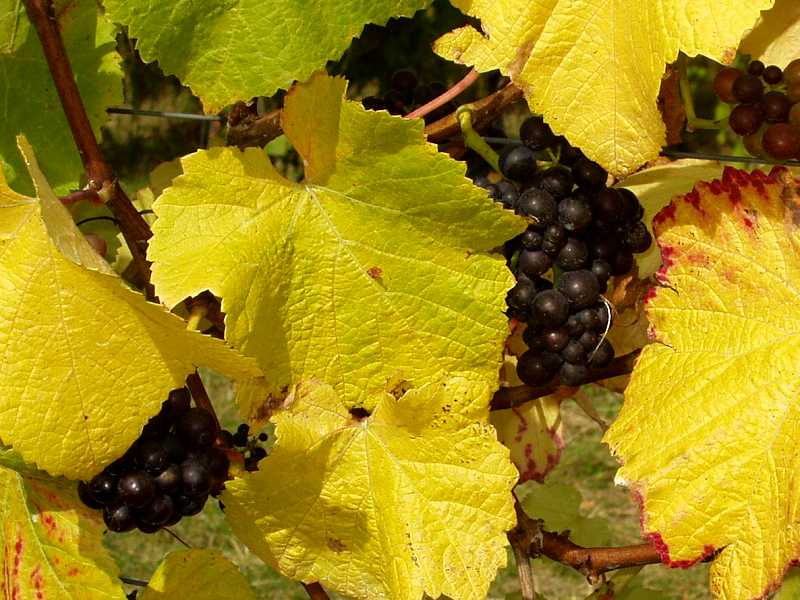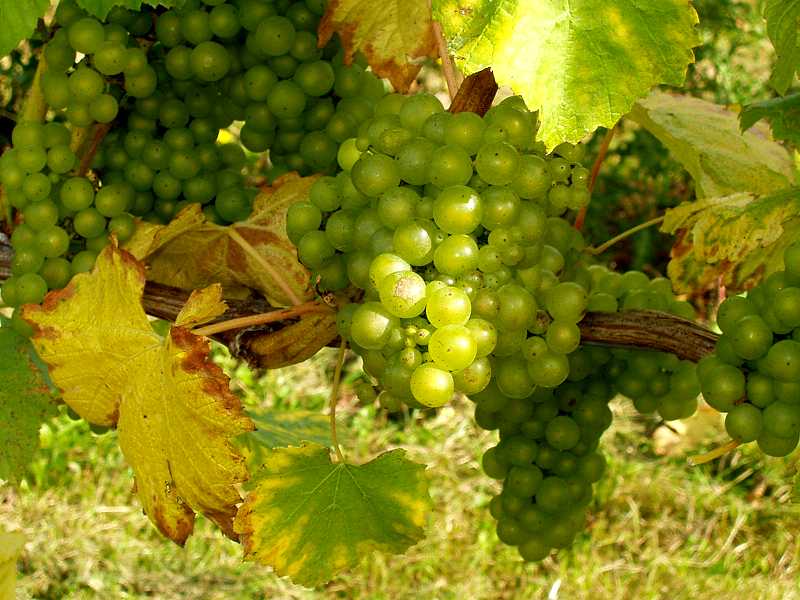Avignon vineyard tours
From Avignon you can take a boat or coach trip to visit the vineyards and wine cellars of the Cotes du Rhone Appellation region. Do not drive because then you will not be able to fully enjoy the marvelous wine as much as you would like. There are five main soil types are found in the Cotes du Rhone Appellation region.

The shingle clay soil, the stony 'argilo-calcaireous' and the soils containing layered stone (on the mountain slopes) provide the vines with a regular source of water and at night give off heat that has been stored up by the stones throughout the day. These types of soil are especially appropriate for producing wine for laying down. Alternatively, loess and sandy soils offer a more irregular supply of water and are more suitable for producing white, rose and lighter red wines.
Climate and the types of soil of the Rhone valley have influenced the type of grape varieties under cultivation. Each variety conveys its own specific character, which, when blended with other varieties. These skillful blends results in the production of well balanced finely tuned wines. Grenache, the main grape variety for red wines, offers fruitiness, warmth and body. Syrah and Mourvedre donate a hint of spices, as well as depth of colour and strength to the wine enabling it to age well. Cinsault is the bearer of finesse and is ideal for making rose and fruity first year wines. White wines, which are fresh and aromatic, are the result of blending together several grapes, such as Bourboulenc, Grenache white, Roussanne, Marsanne, Clairette, and Viognier.

An Appellation decree states that the typical characteristics of Cotes du Rhne wines for the red and rose wine, Grenache must make up at least 40% of the grape variety mix (excluding Northern wines based on the Syrah grape variety). In the same way, 80% of the white wine grape variety mix is made up of: Grenache white, Clairette, Marsanne, Roussanne, Bourboulenc and Viognier. The Minimum alcoholic strength is 11% for red, rose and white wines.
The climate is Mediterranean, its most striking feature being the mistral, the strong wind born of the difference in atmospheric pressure between the north and the south and that is so beneficial to the vines. The region's climate is characterised by its seasonality, with heavy rains, high temperatures and exceptional amounts of sunshine.
The soil is the result of the combination of the vegetation and the climate over thousands of years. The Rhone has left a powerful mark on the whole of the sedimentary basin, carving out the relief and bringing alluvia that have created, from Vienne down to Avignon and the Cevennes, against the foothills of the Alps, a rich variety of soils.
The grape varieties come originally from three different vine-growing regions. The Cinsault, Clairette and Bourboulenc are varieties that were first developed in the Mediterranean regions of France. The Grenache, Carignan and Mourvedre came from provinces in Spain, brought in by travellers around two centuries ago. The Syrah, Roussanne, Marsanne and Viognier are thought likely to have come from wild vines that grow in the forests of Dauphine
The Mourvedre red wine grape flowers between June 5 and June 15 and the grapes ripen from the beginning of October. Southern regions are preferable as it requires considerable warmth and light, particularly at the end of its ripening period. Although sensitive to wind, it requires small but regular amounts of water.
The Grenache black red wine grape is an extremely vigorous and productive variety, but prone to rain damage (during flowering). Although there are variations depending on the area, flowering usually takes place between June 5th to 15th, and the grapes ripen between September 15th and October 10th. Grenache is wind resistant and extremely resistant to drought. Most red wines of southern Cotes du Rhone are Grenache based, as are some fruity rose wines.
Chateauneuf-du-Pape
As well as being the name of a French wine region Chateauneuf-du-Pape is an attractive medieval village in the south of France on the side of a hill, guarded by the ruins of an ancient castle towering above. It is north of Avignon. From the chateau hill you have an outstanding view in all directions, mostly of vineyards. Châteauneuf-du-Pape is translated as the Pope’s new castle. It was his summer palace in the 14th century when the pope was based at Avignon. Unfortunately it was destroyed in 1940 during WW2.
Cotes du Rhone Villages special wines
There is one higher level in the Cotes du Rhone called Cotes du Rhone Villages. These wines are from specific village areas that have a few more standards the wine must reach to receive the village label. Some to take note of are Cairanne, Rasteau, Seguret and Beaumes-de-Venise. The good thing about both Cotes du Rhone and Cotes du Rhone Villages is that big producers of the smaller appellations are taking the opportunity and freedom offered by this broad appellation and creating wines of very high quality, and lower in price.
Cotes du Rhone French Appellation d'Origine Controlee (A.O.C) Classification System
If like me you may find the French Appellation d'Origine Controlee (A.O.C) Classification System difficult to understand. The French system of labeling wine is confusing to many enthusiastic wine lovers. In France, the label shows the wine growing area and not the grape variety. The French established the Appellation d'Origine Controlee (A.O.C) system in the 1930s, which covers a wide array of agricultural products, such as wine, cheese, sausages and sweets. It goes by the regional system; goal is to protect a region's specific product and gourmet tradition.
The Institut National des Appellations d'Origine (INAO) is the regulator. It is illegal to sell a product under one of the A.O.C. labels if it does not comply with the criteria set by INAO. While the French A.O.C. system has its merits, its disadvantage is that mediocre producers can legally make use of what is supposed to be a quality seal and thereby devalue its very purpose. It is also said that it stifles creativity and innovation. In our opinion that is not the case. Even if you are in an A.O.C. region you do not need to follow INAO's rules; you just cannot label your product under the respective A.O.C. label. A few vintners have voluntarily done so. To sum it up: Even with the A.O.C. system one needs to focus on the usual criteria, in the case of wine: the vintner's reputation over the years, the micro-terroir, the grape varieties used, the vintage and the wine making process.
The Cotes du Rhone appellations area comprises over 171 communes in 6 Departments: Ardeche, Drome, Gard, Loire, Rhone and Vaucluse. In 2004 10 new communes suitable for the production of A.O.C. Cotes du Rhone wines were added, and two communes were dropped due to urbanization. The different appellations in the Cotes du Rhone area are: Beaumes de Venise (for the reds and the sweet wines), Chateau Grillet, Chateauneuf du Pape, Clairette de Die, Condrieu, Cornas, Cote Rotie, Coteaux de Pierrevert, Coteaux du Tricastin, Cotes du Luberon, Cotes du Rhone. The quality of the wine depends on factors such as soil conditions, grape varieties, yield management and the wine making process. Vintage is a lesser factor in the Southern Rhone Valley unless it is a disaster year. Finally more subjective factors like fashion and the preferences of the person writing the review play a significant role. Robert Parker, Mike Tanzer, Janice Robinson, Wine Spectator, Decanter Magazine or the New York Times carry more weight than you or the editors of this website.
So to sum it up: there is widespread agreement that a considerable number of wineries in these 5 A.O.C. villages (Chateauneuf de Pape, Gigondas, Vacqueyras, Beaumes de Venise and Vinsobres) as well as in Cairanne and Rasteau, the top Cotes du Rhone Villages, produce on a very consistent basis top notch wines and that there are a few exceptional wineries in the other villages, like St.Gervais and Uchaux, producing on an equally consistent basis equally superb wines.Villages, Cotes du Ventoux, Cotes du Vivarais AOVDQS, Crozes-Hermitage, Gigondas, Hermitage, Lirac, Rasteau (for the sweet wine only), St.Joseph, St.Peray, Tave, Vacqueyras and Vinsobres.
Travel books

